An igloo keeps you warm by trapping your body heat. Igloos are made of compressed snow. Almost 95% of this snow is trapped air, which is a good insulator. This insulation prevents the loss of body heat, and thereby keeps us warm.
Imagine that you’re walking around the snowy landscape of the Arctic tundra. Obviously, you start feeling cold with all the icy, chilling wind. You frantically look around for shelter, but there is nothing but crystal-white snow all around you. Finally, you find an igloo, which is also made of snow! You enter the structure, and after a while, you are surprised to find that you start feeling warm!
An igloo, which is made of the same freezing snow that makes us cold, is also very good at keeping people warm. But how? How can something so cold make you feel warm?
Well, that has something to do with the amazing properties of snow and the structure of an igloo.

Why Do We Feel Cold?
Since the whole igloo scenario is an interplay between coldness and heat, let’s begin by understanding what ‘hot’ and ‘cold’ actually mean.
Heat is a form of energy that can be transferred from one body to another. Heat energy moves from regions of higher temperature to regions of low temperature until the temperatures of the two regions become equal and result in thermal equilibrium.
This movement of heat can happen in three ways:
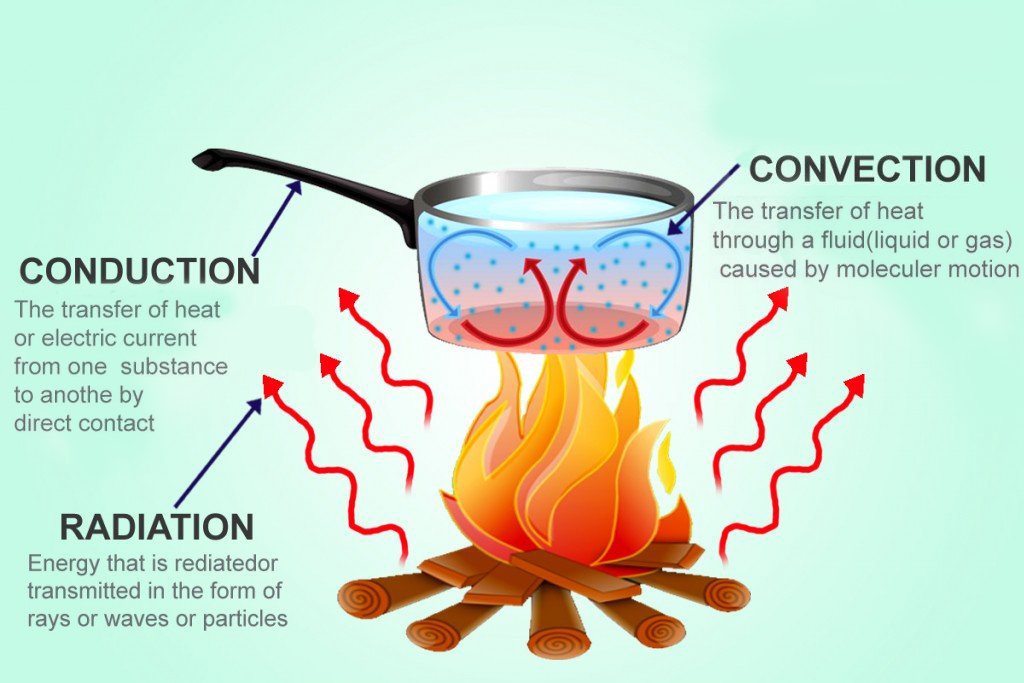
- Conduction: Here, heat is transferred by direct physical contact between objects. It doesn’t involve the literal movement of matter, but thermal energy is transferred across adjacent molecules. If you touch a hot pan, your hands will burn, as heat is transferred from the pan to your hand by conduction.
- Convection: This is the major form of heat transfer in fluids (liquids, gases). Here, heat is transferred by the movement of molecules based on their density. Warm air rises and cold air sinks due to convection.
- Radiation: Radiation is the transfer of heat in the form of electromagnetic radiation. It doesn’t necessarily require a medium, so heat can be transferred via radiation through a vacuum as well. We feel the warmth of sunlight because the sun transfers heat across space via radiation.
In short, the terms ‘hot’ and ‘cold’ actually describe heat itself. The bodies that lose heat get colder, while those that gain heat get warmer. So, when you feel cold, you are simply losing heat.
An interplay of these three mechanisms keeps an igloo warm. Let’s see how!
Also Read: How Does The Sun’s Warmth Reach The Earth? Why Can’t It Reach Us Through Cloud Cover?
The Science Behind An Igloo
On a chilly morning, a relatively small piece of blanket can make us feel warm and cozy. A blanket doesn’t generate any heat of its own and it isn’t something you necessarily define as ‘hot’, so how does it keep you warm? Simply by trapping the body heat from escaping! A blanket in itself isn’t warm; all that it does is prevent the loss of our body heat.
An igloo works on a similar principle. The igloo acts as a huge blanket and confines a person’s body heat within its walls.
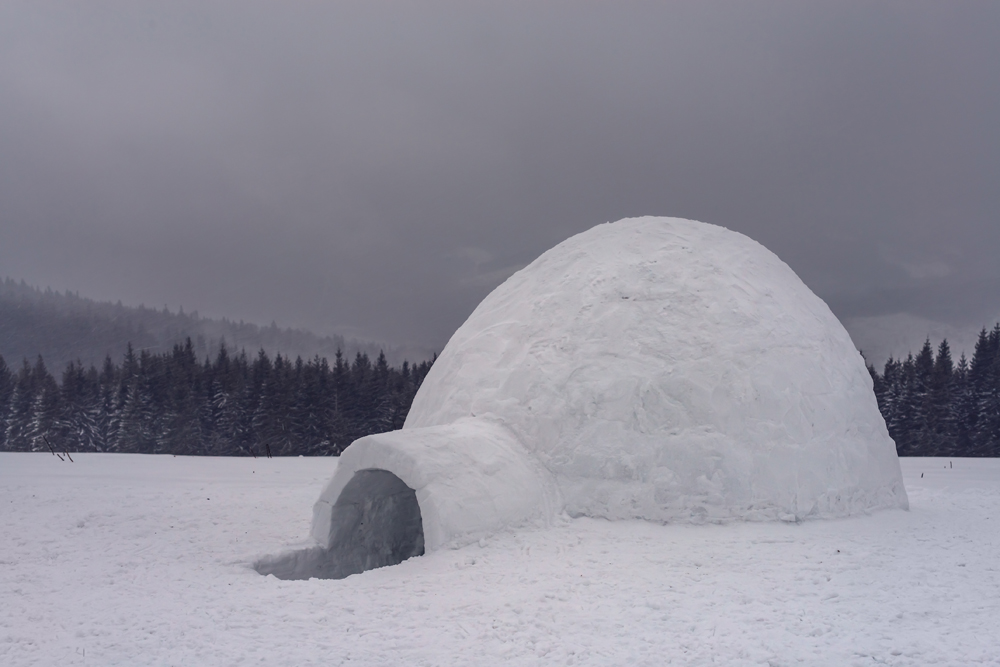
Inuits
Igloos are traditionally associated with the indigenous populations of the Arctic regions of Alaska, Canada, and Greenland, broadly called the Inuits. They are temporary shelters made by Inuits to be used as winter homes or for hunting expeditions.
The key to a warm igloo lies in choosing the right raw material; and there are only two raw materials abundantly available in the Arctic—snow and ice.
Compressed Snow
An igloo is made of compressed snow. Compact hardened snow is a great insulator of heat because snow is nothing but semi-frozen water with roughly 95% trapped air. The air molecules trapped between the tiny ice crystals create air pockets, which act as excellent insulators that prevent heat loss due to convection. Thus, snow is the perfect material with which to build a warm abode amidst the freezing Arctic environment.
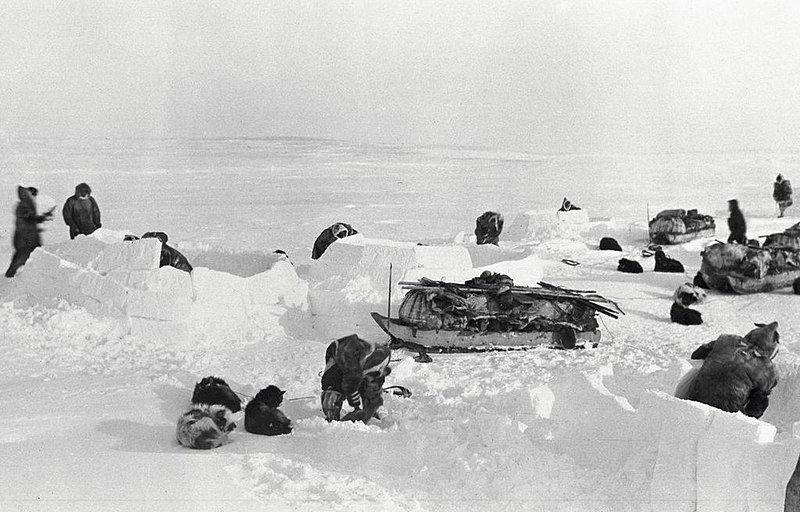
Unlike snow, ice is basically frozen water and does not contain a lot of air pockets, which makes it a bad insulator. Thus, snow is preferred over ice for the construction of igloos.
The type of snow used is equally important. Freshly fallen snow is brittle and powdery and cannot be used to build a sturdy structure. Thus, igloos are made by cutting out hardened, compressed snow blocks from the ground.
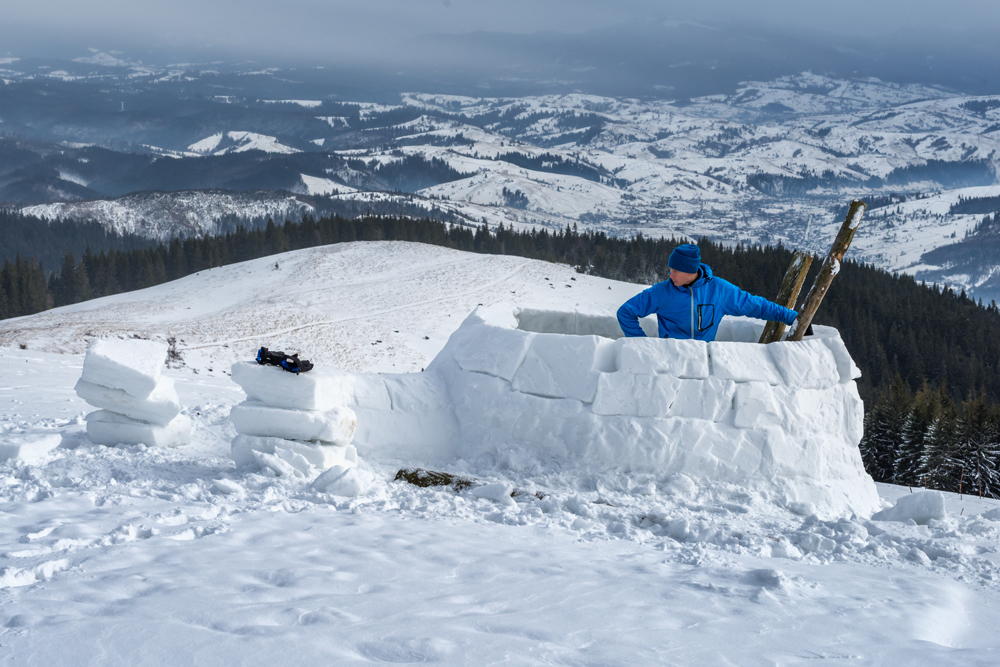
An experienced Inuit can build an igloo from scratch in almost an hour. All it takes is a saw, snow, and plenty of skill and technique.
Also Read: Why Do Penguins Huddle Together?
How Does An Igloo Keep You Warm?
The human body converts energy from the food we consume into heat energy. This heat energy is lost from our body to the external environment through conduction, convection, and mostly radiation. The escaped heat moves around the igloo through convection and warms up some of the air inside it.
Since cold air is denser than warm air, the cold air settles at the bottom of the igloo, while the warm air moves up towards the top of the structure. Catering to this, the igloo floor is divided into terraces. The upper warm layer is where people sleep, the middle layer is for cooking and fires, and the bottom sunken floor acts as a cold sink.
The insulating snow walls prevent the loss of body heat and also protect people from the cold wind blowing outside.
Thus, an igloo makes use of the very body heat lost from our body in order to regulate the temperature of the space.
Does The Structure Of An Igloo Affect Its Warmth?
The structure of an igloo also plays an important role in confining the heat inside.
The small door and the tiny tunnel leading to the central dome of the igloo have their own significance. The small sunken right-angled tunnel acts as a cold sink, while also preventing snowstorms and cold winds from blowing directly into the main compartment of the igloo.
As discussed earlier, an igloo is divided into terraces or chambers. The main chamber has an upper platform for sleeping and a lower platform for other chores. The interior of the chamber is further covered with sealskin to improve insulation. In addition to the main chamber, there is an anterior chamber that acts as a cold sink and a storage space for preserving food.
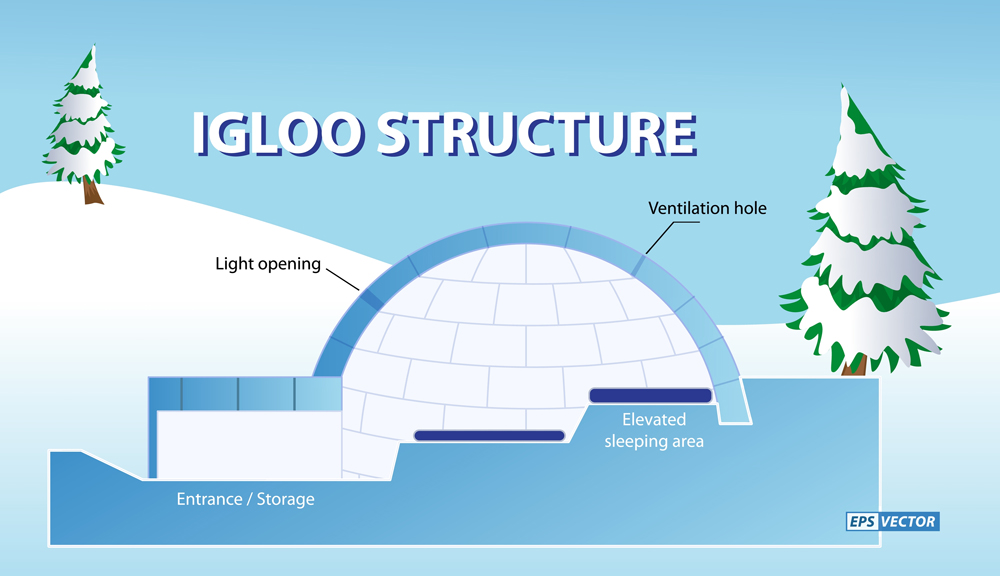
Have you ever thought about why igloos are shaped like domes? Why aren’t there any cubical igloos? Well, the shape of the igloo determines its stability. The dome of an igloo is shaped as a catenoid. This shape provides structural stability and ensures that the igloo doesn’t buckle or collapse under pressure.
Since snow is not something that provides the most stability, the catenoid-shaped dome distributes pressure evenly and enhances the overall strength of the igloo. In fact, a properly built igloo can withstand the weight of a person standing on it!
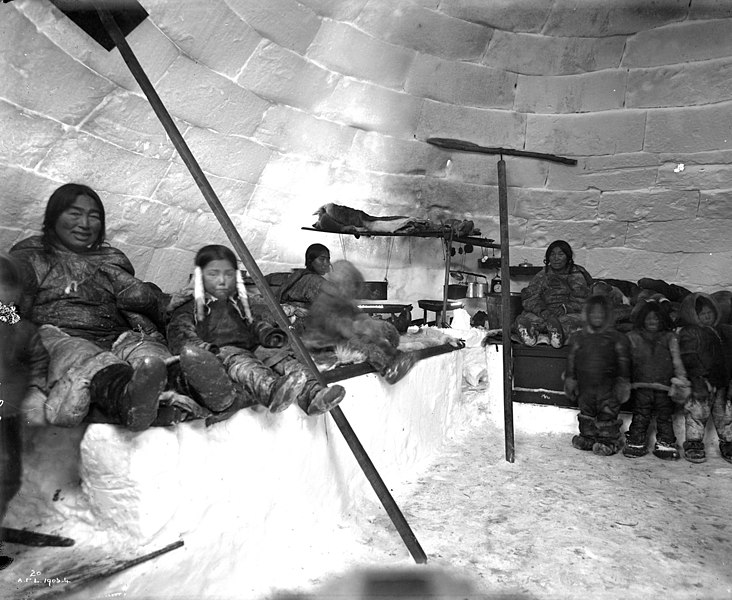
Thus, proper implementation of construction techniques is vital for keeping the igloo warm and comfy.
How Warm Is An Igloo?
If built right, an igloo can create a difference of about 40oC between its interior and the external environment just through the use of body heat.
In a study conducted by Rich Holihan and his colleagues, it was found that inside an igloo, near the bodies of the people, the temperature was around 36oC (310K). In the air surrounding the people, the temperature dropped to almost 16oC (290K), and at the far end near the walls of the igloo, the temperature was around 1oC (275K). Also, if there are more people inside the igloo, it gets even warmer.
Even though 16oC or 1oC isn’t a “cozy” temperature, considering that the temperature of arctic terrains can reach a staggering -40oC to -50oC, an igloo does a great job of regulating the temperature. Thus, for people living in sub-zero temperatures, an igloo makes for a toasty abode.
Even animals in Arctic regions make use of the insulating properties of snow by burrowing holes to stay warm.
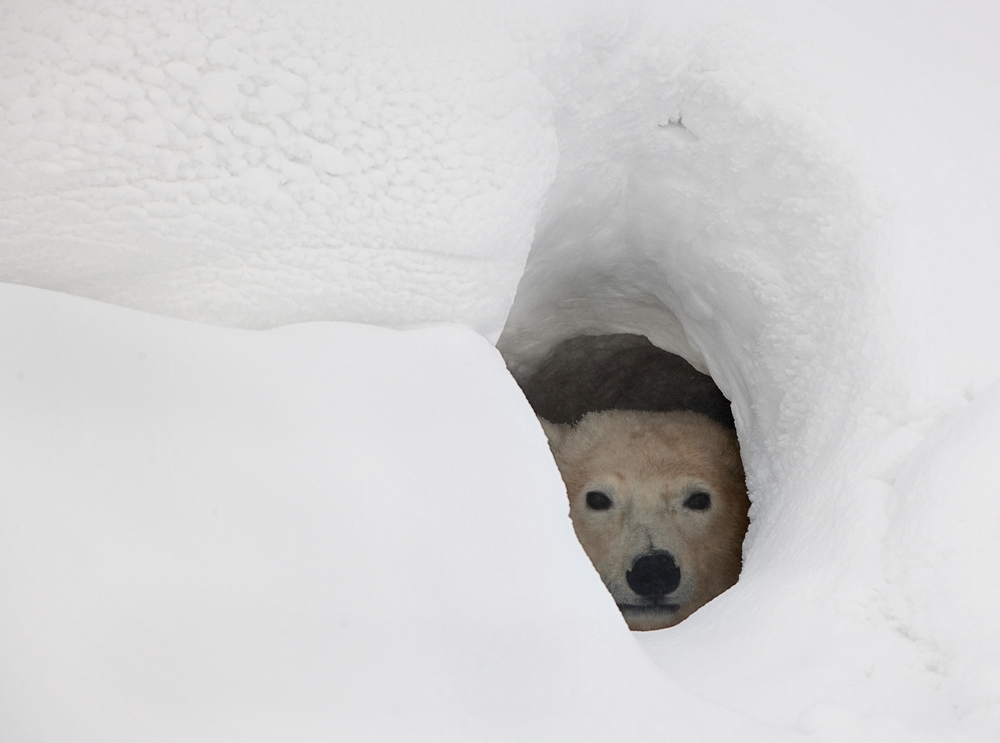
Conclusion
It’s quite amazing how the Inuits managed to achieve a warm and stable construction method by trial and error, without having any awareness of the underlying mathematics or physics behind it. An igloo is therefore an ingenious type of construction—a perfect example of vernacular architecture.
Now that you know the science behind an igloo, if you ever find yourself stranded in an icy landscape with nowhere to go, dig up some snow blocks, make yourself a dome, and keep yourself warm!
How well do you understand the article above!

